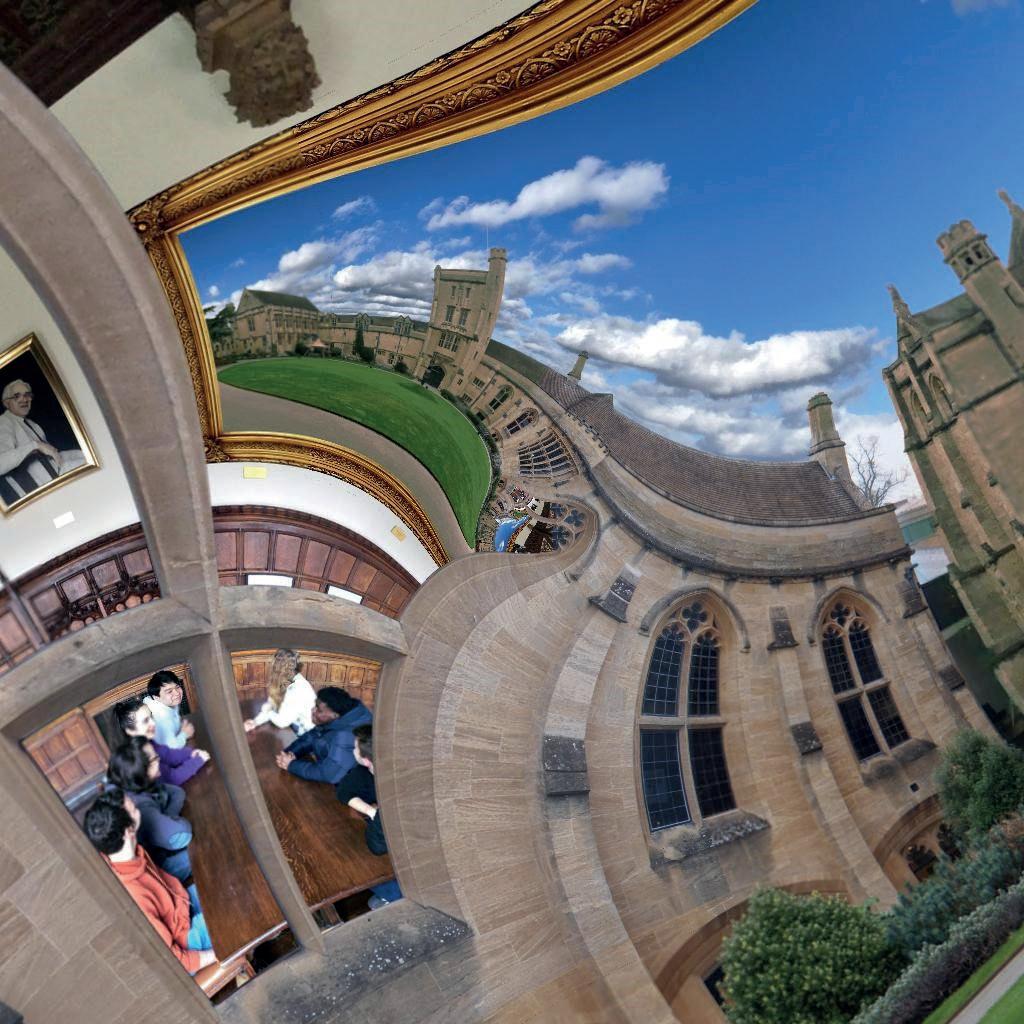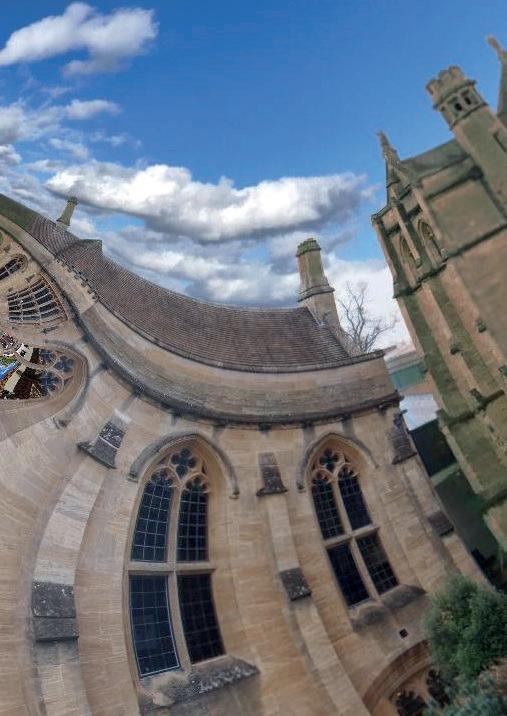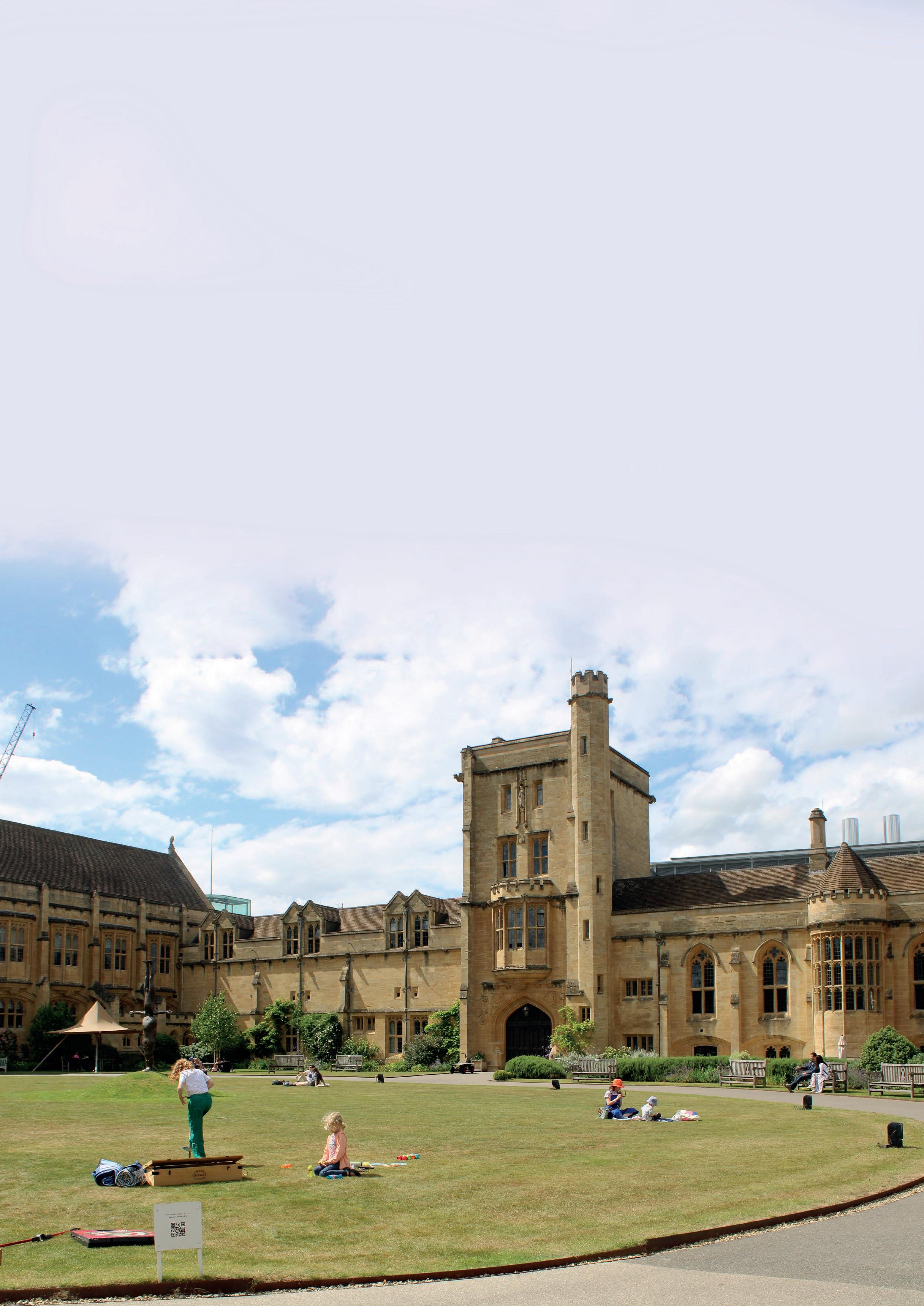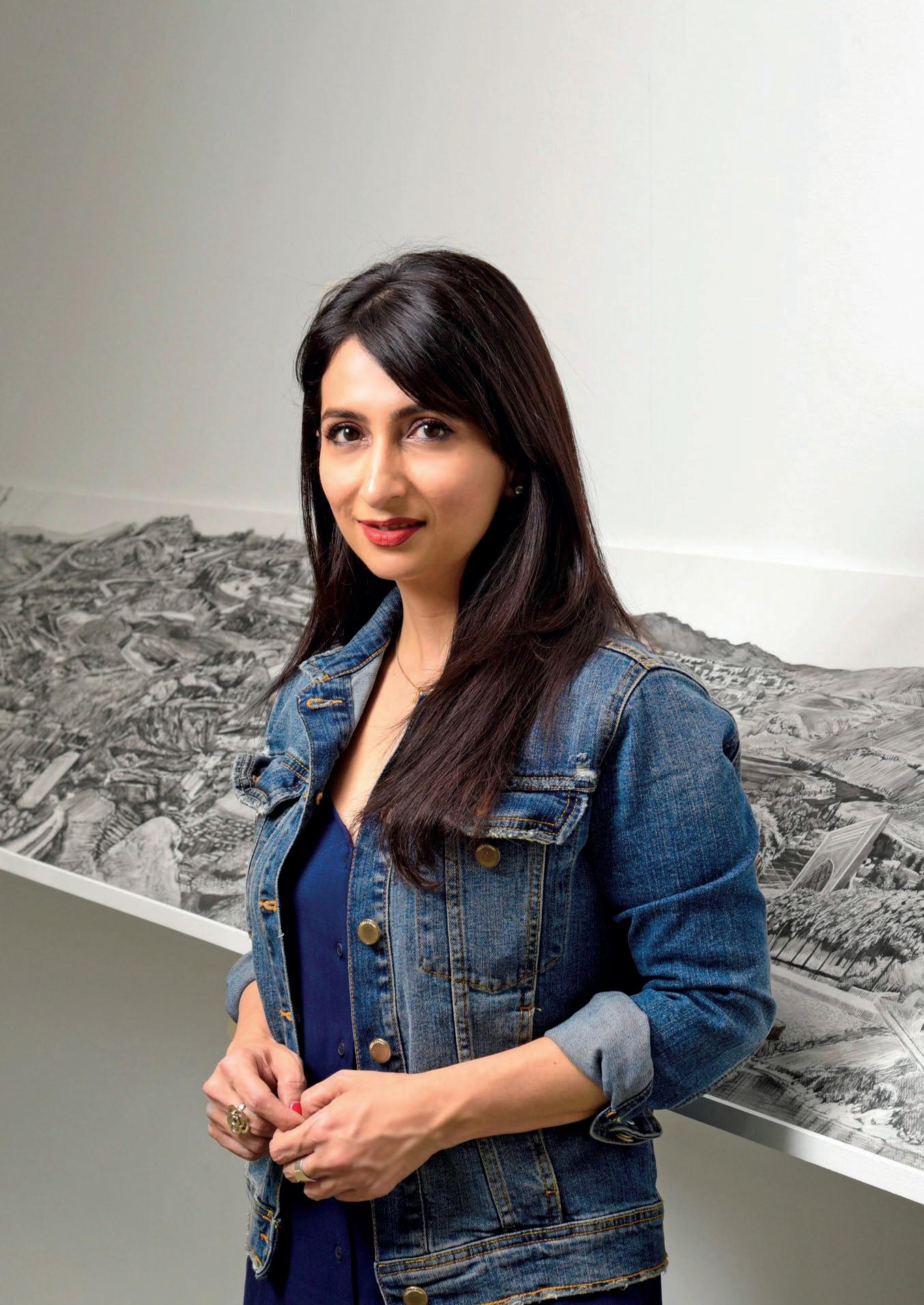
3 minute read
Where Mathematics meets Art
a Mansfield version of Escher’s Print gallery
Jon Chapman, Professorial Fellow in Mathematics & its Application
Advertisement
The works of the Dutch graphic artist Maurits Cornelis Escher (1898–1972) have long held a fascination for many mathematicians. In 1956, Escher made an unusual lithograph with the title Prentententoonstelling, which in English is Print gallery. In it a man stands looking at a picture in a gallery. In the picture is a Mediterranean town by the sea, and as you follow the buildings around from left to right and then down you realise that the gallery is actually one of the buildings in the town, so that the man is standing in the very picture at which he is looking. The mathematics behind this print was uncovered by Dutch mathematicians Bart de Smit and Hendrik Lenstra in the early 2000s. In 2002, Lenstra gave a colloquium in Oxford explaining his work. I was fascinated – and immediately wondered whether I could use Lenstra’s theory to produce my own Escher-style pictures. That turned out to be too ambitious for the software and computing power readily available at the time (and indeed my own programming skills). But many years later, when technology had moved on, I dug out my old notes and managed to produce some Escher-style prints. (Incidentally, my wife believes that if I haven’t looked at something for 10 years, surely I should throw it away. I hold this up as a counterexample: I hadn’t opened the box containing my notes for over 12 years, but I knew where to find them when I needed them!) The key, it turns out, is to start with an image with a scale invariance, usually known as the Droste effect, after a Dutch brand of cocoa powder. Here, for example, is a picture of me, holding a picture of me, holding a picture of me, and so on forever. If you blow this picture up by a factor of about three, it looks exactly the same. To create the Escher effect, you slice the image, shrink one side of the cut relative to the other, and glue them together again so that you can’t see the join – but this time each image joins with the next image in the nested sequence. So now, if you move around the outside of the image, you see that I’m in the picture that I’m holding. The frame of the picture is now a spiral, instead of a nested sequence of rectangles. This spiral, and the associated copies of the same image at different scales, are not visible in Escher’s print. That’s because the scale factor is not three but 256 – the extra copies of the image are tiny and hidden in the small hole in the middle.


I had always thought that Mansfield’s buildings would make for a great Escher-style print. A lecture for maths alumni in March 2022 gave me the incentive to put one together. I decided to use a view of the College from across the main Quad, looking towards the Old Hall. Zooming-in to look through the window of the Old Hall, you see a group of students, and on the wall is the same picture of Mansfield, creating the scale invariance. Because 256 is such a large zoom, to get enough resolution in the final image I had to take multiple images and stitch them together carefully. Then I applied Lenstra’s map, and here is the result. You can see the students in the Old Hall, with a picture of Mansfield on the wall, and as you follow the picture round to the right and down you see that you are looking through the window of the building in the picture, so that the students are in the picture they are looking at!










